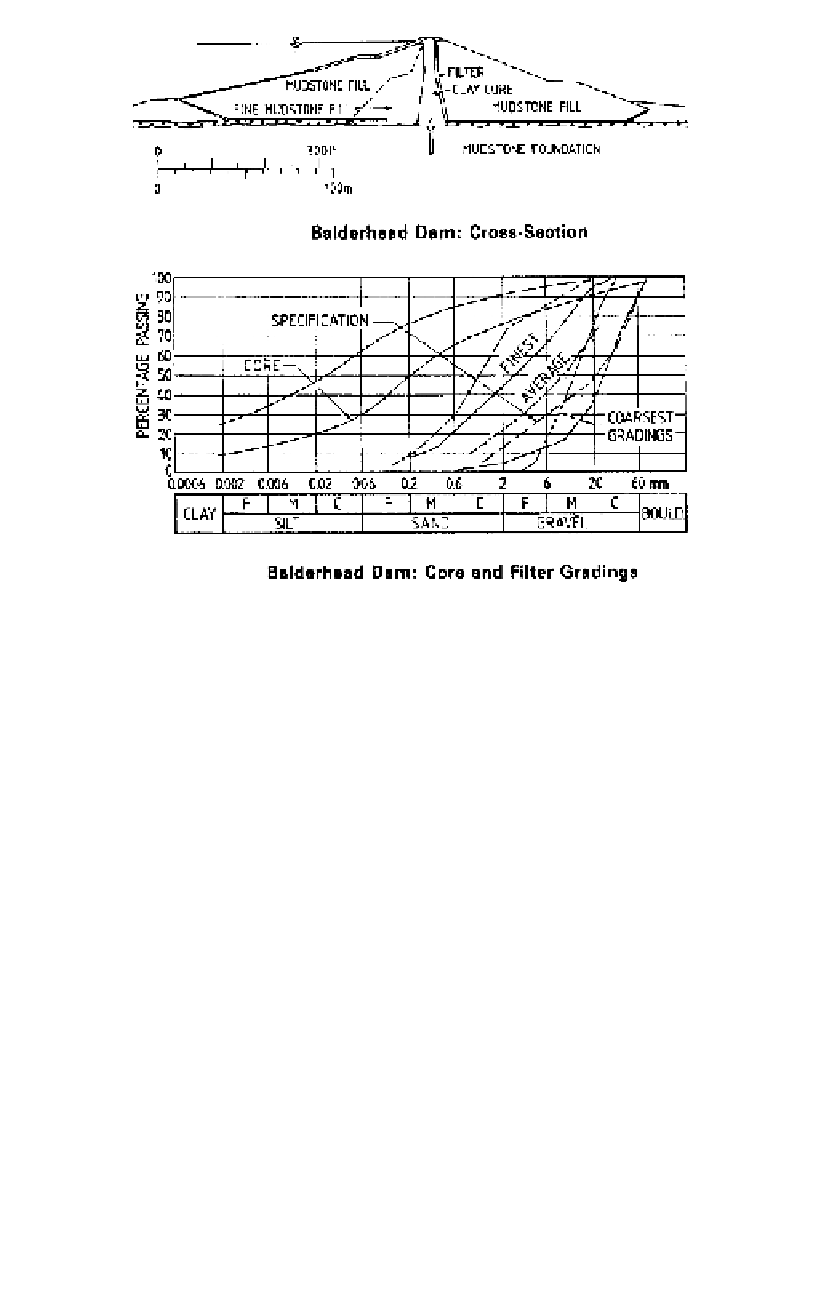Environmental Engineering Reference
In-Depth Information
Figure 9.11.
Balderhead Dam core and filter gradings (Vaughan and Soares, 1982).
this becomes the controlling constriction size D
*
) and application of D
C
0.25D
5F
and
D
*
0.20D
15F
.
They point out this gives finer filter requirements than those given by Sherard, Dunnigan
and Talbot (1984b) and coarser than that of the method proposed by Vaughan and Soares
(1982). They concluded that to design on use of precedents and experiments (essentially the
method used by Sherard, Dunnigan and Talbot, 1984b) is acceptable, but that checking
with some other approach may be prudent.
9.2.1.4
Vaughan and Soares
Vaughan and Soares (1982) provoked considerable discussion when, in a review of par-
tial piping failure of Balderhead Dam in northern England, they claimed that in some base
soils self filtering could not be relied upon and that it was necessary to design filters to
prevent the passing of clay flocs into the filter.
The core for the Balderhead Dam had been constructed from well graded glacial till,
which had a high resistance to erosion. Filters were crusher run hard limestone with grad-
ing limits shown on Figure 9.11.
Cracks occurred in the dam core by hydraulic fracture and Vaughan and Soares (1982)
postulated that the partial piping failure which occurred more than a year after the dam
was filled was due to erosion of the finer clay particles in the cracks. The flow velocity in
the cracks was postulated to be too low to transport coarser particles from the core, so pre-
venting self filtering within the core material and allowing the clay particles to erode into
the filter. As discussed above, Kenney et al. (1985) observed similar behaviour in two dams
constructed of widely graded glacial till.
To overcome this, Vaughan and Soares (1982) proposed the concept of a “perfect filter”.
In this approach, the particle size distribution of the clay core is obtained in a hydrometer

